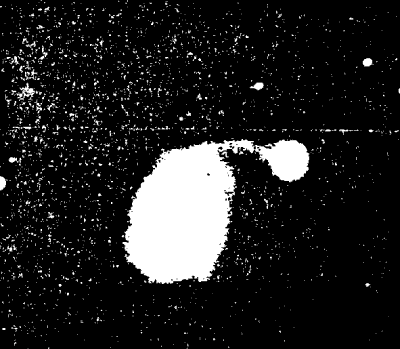 |
Science Frontiers ONLINE No. 27: May-Jun 1983 |
|
|
Anomalous redshifts (again)
For years Halton Arp has been searching the skies for anomalous astronomical objects. Among the many maverick items in his catalog are objects that seem physically related but have radically different redshifts. Examine for instance the illustration, which shows the large galaxy NGC 7603 (possessing a supposed recessional velocity of 8,700 km/sec) and its smaller companion at the end of the filament, which recedes at the much higher velocity of 16,900 km/sec. According to the Theory of the Expanding Universe, the greater the recessional velocity (as measured by the red or Doppler shift), the farther away the object is. But Arp's many examples of physically connected galaxies with wildly different redshifts suggest that some of the disparities in redshifts may actually be due to the related objects flying apart from each other. In the illustration, the small companion might have been "shot out" of its parent galaxy at high velocity by some unappreciated galactic gun.
(Arp, Halton C.; "Related Galaxies with Different Redshifts?" Sky and Telescope, 65:307, 1983.)
Comment. Left unsaid in Arp's article is the possibility that redshifts are not good measures of distance. If they are not, doubt is cast on the Theory of the Expanding Universe and the reality of the Big Bang itself. Some astronomers, according to news items in scientific publications, have heard enough about discordant redshifts and would rather see scarce telescope time used for other types of work!
Reference. Anomalous quasar redshifts are cataloged at AQF2 in Stars, Galaxies, Cosmos. For details on this book, visit: here.
